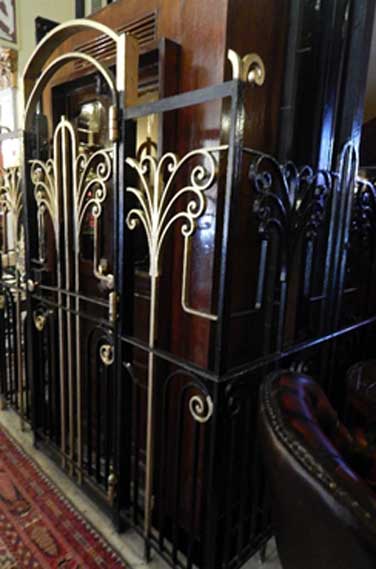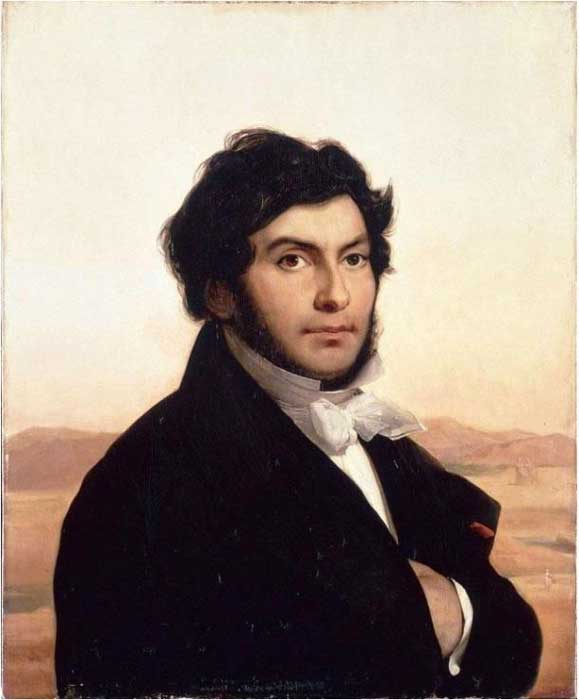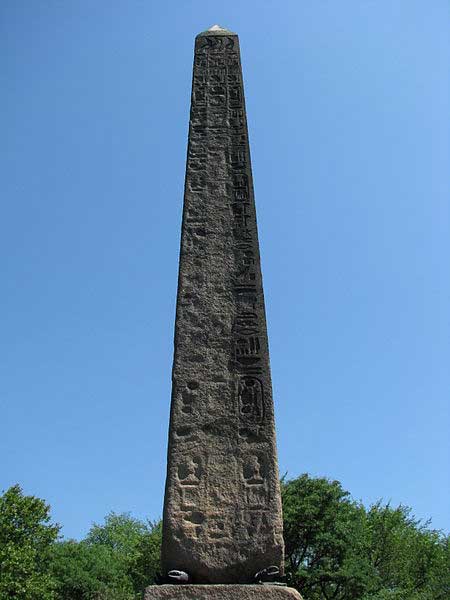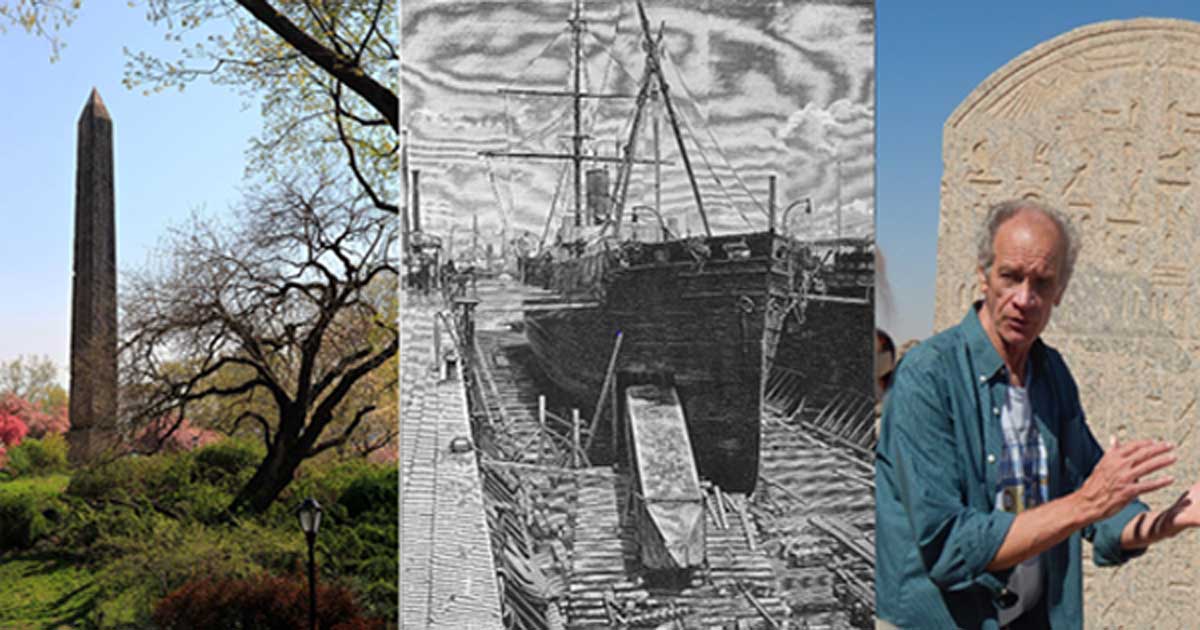Bob Brier and the Hunt for the New York Obelisk
Bob Brier is arguably the world's most famous Egyptologist. Professor at Long Island University in New York, where he has tenure, he teaches both philosophy and Egyptology. A popular host on Learning Channel's Great Egyptians series, he was the first person since ancient times to mummify a human in the ancient Egyptian style. National Geographic's television special, Mr Mummy, caused its creator to be instantly dubbed ''Mr Mummy'', a nickname which stuck. Blessed with a combination of brilliance and the Midas touch, Bob Brier was invited to appear in a series of lectures, The Great Courses, which is a series of college-level audio and video courses produced and distributed by The Teaching Company. The History of Ancient Egypt series pays royalties to Professor Brier to this day. And rightly so. Standing behind a lectern in his trademark blue shirt the maestro delivers 48 half hour lectures. It is hard to believe that this would captivate, let alone stand the test of time. However, most people who watch cannot switch off. Viewers watch hour after hour of extraordinary performances with little more than the human voice, enthusiasm and knowledge.
Professor Brier's latest book, Cleopatra's Needles: the Lost Obelisks of Egypt, not only received favourable reviews in Wall Street Journal and KMT, but also appeared in extract form in international magazines such as Nile Magazine, which has only increased its popularity. It is, in some ways, the result of a lifetime obsession. Professor Brier has many interests and projects, obelisks being one of them. As a native New Yorker he is especially interested in the discovery and transport of Tuthmosis III's jubilee obelisk from Egypt to its current home on Graywacke Knoll in his hometown. What is not known is that, prior to the publication of his book, the eminent academic engaged in some hunting of his own, or to be precise, sought the exact location of the New York obelisk in downtown Alexandria.

Bob Brier examining carvings in Egypt. Photo credit: Sharon Janet Hague
The Hunt for the New York Obelisk
Like many who watched his Obelisks lecture from The History of Ancient Egypt, series I had the happy privilege of travelling with Bob Brier and a group of Americans to Egypt . In an Alexandrian hotel, on a freezing February night where the ancient hotel lift did not work, guests still contrived to be stuck in the steel contraption. The wise took stairs, while others were extricated from the ancient steel lift. Finally, everyone hurried down a corridor to Bob's lecture where a gold sign indicated admission.
Unfortunately, something had gone terribly wrong and instead of a lecture room, we were piled into a very large bedroom. Amusing, since I had spent many a night watching the series from the comfort of mine. Waiting patiently for the last person to squeeze into the tightly packed room, Professor Brier started the talk. It was the Obelisks lecture from the famous series, but with new facts. He concluded by proposing to discover the original location of the New York obelisk.
Next morning, under his orders, the group's vans drew up before the Le Metropole Hotel. It was outside this establishment the famous obelisk was hoisted up with a series of pulleys and cranes to begin its journey out of Alexandria. Bob and his wife, Pat Remler, guided the group into following clues, getting lost in the process and asking passers-by questions. Fluent in Arabic, Bob engaged a number of helpful people who spotted a building behind the site where the obelisk was erected, complete with ornate grillwork, which gave the date of the location.
- Cleopatra’s Needle: The Story Behind the Obelisks
- BREAKING: 4,000-Year-Old Inscribed Obelisk Dedicated to Ancient Egyptian Queen Unearthed in Saqqara

Elevator which now stands on the site of the New York Obelisk, Alexandria, Egypt. Photo Credit: Sharon Janet Hague
A competition runner most of his life, Bob spent a morning hurrying at breakneck speed across the Alexandrian footpaths, his group at his heels. Bursting through heavy glass doors while investigating a number of hotels, the professor, with his intense mental concentration, continued to draw in the Egyptians who helped look. Finally, at the base of a lift in the lobby of a hotel, courteous staff pointed out the location of the uprooted obelisk.
So what is the New York obelisk and why indeed, is there an Egyptian obelisk in New York at all?
The Migration of Obelisks
First of all, obelisks represented the Egyptian sun-god Re. Many countries at some point have acquired them. Obelisks, in fact, have been transported to countries outside Egypt for more than two thousand years. The Roman emperors took them as spoils of war. To this day Italy displays thirteen of these needles, more than any other country, including modern Egypt. There are probably at least another dozen lost underneath its city streets. France also owns an obelisk, which was a gift from Egypt to Champollion, the first great decipherer of hieroglyphs in modern times.
- The Philae Obelisk, Hieroglyphs and Understanding a Vanished Culture
- The Pharaonic Royal City of Sais Leaves Few Clues for Researchers

Leon Cogniet’s portrait of Jean-Francois Champollion (Public Domain)
But it is the English obelisk which provoked American jealousy. When Waynman Dixon picked the fallen obelisk of Tuthmosis III at Alexandria and transported it by sea to its current location on the Thames embankment, America had to own one. Why the jealousy? The rivalry between England - the old-world order and the new, represented by America - exists to this day.

The "Cleopatra's Needle" obelisk in London, Victoria Embankment (CC0)
The acquisition of America's obelisk
To acquire the New York obelisk was a daunting feat which was finally accomplished despite several changes in the Egyptian government. Originally offered to America by the Egyptian government at the opening of the Suez Canal in 1869, the offer of an obelisk was later retracted. William Vanderbilt, the American railroad mogul, finally funded the removal of an obelisk from Egypt to America. In May 1877 the US Consul-General, Judge Elbert E. Farman managed to acquire the obelisk as a gift from the Khedive.
And what did they get for their pains? None other than the remaining obelisk from the pair commissioned by Egypt's greatest warrior king, Tuthmosis III. Fashioned for his Heb-Sed festival, which Egyptian kings traditionally celebrated every thirty years into their reign, both obelisks were quarried from Aswan granite. In 13 BC the pair were moved to Cleopatra’s Caesareum in Alexandria, Egypt by Gaius Julius Caesar Augustus. One had toppled in antiquity and was snapped up by the British. The Americans, as fate would have it, now took the other. It appears ironic in hindsight that two superpowers acquired the obelisks commissioned by the Egyptian pharaoh who turned Egypt into an empire.

Cleopatra's Needle, Central Park, New York City. (CC BY-SA 3.0)
Lieutenant-Commander Henry Honeychurch Gorringe, a decorated US naval commander, volunteered to transport the remaining obelisk from Alexandria to New York, overcoming hurdles far more daunting than those faced by the French and English. The Atlantic Ocean was only one of them. Ingenious methods were used to move the obelisk which, as it was still upright, was much more difficult to move than the English one. Buying a cheap postal steamer, the Dessoug, from a bankrupt Egyptian government, Gorringe converted its hold to take the 250-ton obelisk on board.
- Archaeologists identify Temple of Hatshepsut, the female Pharaoh the ancients tried to erase
- The great Pharos of Alexandria

Placing the Cleopatra's Needle Obelisk in the Hold of the Steamship Dessoug, on its way to Central Park in New York City, 1880. (Public Domain)
Once in America, sixteen pairs of horses pulled the pedestal to Central Park. The obelisk was towed up the Hudson River to 96th Street on pontoons, after which a rail track, built by Gorringe was used to move the obelisk through the city at a rate of only one block per day. It took six months to reach its current location on Graywacke Knoll. Even then the drama did not stop. In his latest book Professor Brier gives an update on the deterioration of the obelisk which shed hundreds of pounds of granite due to the harsh New York winters.
Professor Brier's book, which has been highly recommended both in the Wall Street Journal and Kmt, captures the history of obelisks in a comprehensive, easy-to-read style. As he once said, if he could make a motion picture it would be about Tuthmosis III's obelisk trip from Egypt to America. Cleopatra's Needles: the Lost Obelisks of Egypt places a well-deserved spotlight on obelisks, which often overlooked, were nevertheless, the silent stars in engineering feats which rivalled that of pyramid building. And perhaps, one day, that movie will be made.

Bob Brier in Egypt. Photo Credit: Sharon Janet Hague
Top image: Cleopatra's Needle, NYC (CC BY-SA 3.0); Cleopatra's Needle Obelisk in the Hold of the Steamship Dessoug, 1880. (Public Domain); Bob Brier in Egypt. (Sharon Janet Hague)
References
Brier, Bob Cleopatra's Needles: the Lost Obelisks of Egypt, New York: Bloomsbury, 2016
Brier, Bob. Egyptomania: Our Three Thousand Year Obsession with the Land of the Pharaohs. New York:Macmillan, 2013.
Engelbach, Rex. The Problem of the Obelisks. London:Fisher Unwin 1923
Noakes, Aubry. Cleopatra's Needles. London: Witherby,1962.

















